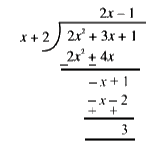Obtain the equation for bandwidth in Young's double slit experimeet.
Conditon for bright fringe (or) maxima Solution in Tamil
Equation for path difference:
(i) Let d be the distance between the double slits S1 and S2 which act as coherent sources of wavelength λ. A screen is placed parallel to the double slit at a distance D from it. (ii) The mid-point of S1 and S2 is C and the i mid-point of the screen O is equidistant from S1 and S2 P is any point at a distance y from O. (iii) The waves from S1 and S2 meet at P either n-phase or out-of-phase depending upon the path difference between the two waves. (iv) The path difference δ between the light waves from S1 and S2 to the point P is,
δ=S2P−S1P
(v) A perpendicular is dropped from the point S1 to the line S2P at M to find the path difference more precisely.
δ=S2P−MP=S2M
The angular position of the point P from C is θ.∠OCP=θ
From the geometry, the angles ∠OCP and ∠S2S1M are equal.
∠OCP=∠S2S1M=θ
In right angle triangle ΔS1S2M , the path difference, S2M=dsinθ
δ=dsinθ
If the angle θ is small, sinθ≈tanθ≈θ .From the right angle triangle ΔOCP,tanθ=yD
The path difference, δ=dyD
Based on the condition on the path difference, the point P may have a bright or dark fringe.
Condition for bright fringe (or) maxima :
(i) The condition for the constructive interference or the point P to be have a bright fringe is,
Path difference, δ=nλ
where, n =1,2,3...
∴dyD=nλ
y=nDλd or yn=nDλd
(ii) This is the condition for the point P to be a bright fringe. The distance is the distance of the nth bright fringe from the point O.
Condition for dark fringe (or) minima :
(i) The condition for the destructive interference or the point P to be have a dark fringe is,
Path difference, δ=(2n−1)λ2
where, n = 1, 2, 3, .. ..
∴dyD=(2n−1)λ2
y=(2n−1)2λDd or yn=(2n−1)2λDd
(ii) This is the condition for the point P to be a dark fringe. The distance yn is the distance of the nth dark fringe from the point O.
(iii) The formation of bright and dark fringes is, shown in Figure.

(iv) This shows that on the screen, alternate bright and dark bands are seen on either side of the central bright fringe. (v) The central bright is referred as 0th bright followed by 1st dark and 1st bright and then 2nd dark and 2nd bright and so on, on either side of O successively as shown in Figure.

Equation for bandwidth :
(i) The bandwidth (β) is defined as the distance between any two consecutive bright or dark fringes. (ii) The distance between (n+1)th and nth consecutive bright fringes from O is given by
β=y(n+1)−yn=((n+1)λDd)−(nλDd)
β=Dλd
(iii) Similarly, the distance between (n+1)th and nth consecutive dark fringes from O is given by,
β=y(n+1)−yn
=((2(n+1)−1)2λDd)−((2n−1)2λDd)
β=Dλd
Similar Questions
(a) In Young's double-slit experiment, describe briefly how bright and dark fringes are obtained on the screen kept in front of a double-slit. Hence obtain the expression for the fringe width. (b) The ratio of the intensities at minima to the maxima in the Young's double-slit experiment is 9:25. find the ratio of the widths of the two slits.
View SolutionObtain the expression for fringe width in the case of interference of light waves.
View SolutionIn Young's double slit experiment , describe briefly how bright and dark fringes are obtained on the screen kept in front of a double slit . Hence obtain the expression for the fringe width.
OR
Describe Young's double slit experiment to produce interference pattern due to a monochromatic source of light. Deduce the expression or the fringe width.
(b) The ratio of the intensities at the minima to the maxima in the Young's double slit experiment is 9:25 . Find the ratio of the widths of the two slits.
View SolutionIn Young's double slit experiment, if th distance between two slits is double of the wavelength of light used. Prove that maximum 5 bright fringes will be obtained on the screen.
View SolutionObtain the expression for fringe width in the case of interference of light waves.
View SolutionDerive an expression for the bandwidth in Young's double slit experiment.
View SolutionDescribe Young's double slit experiment and determine the conditions for obtaining bright and dark fringes.
View SolutionIn young's double slit experiment the central bright fringe can be identified
View Solution
